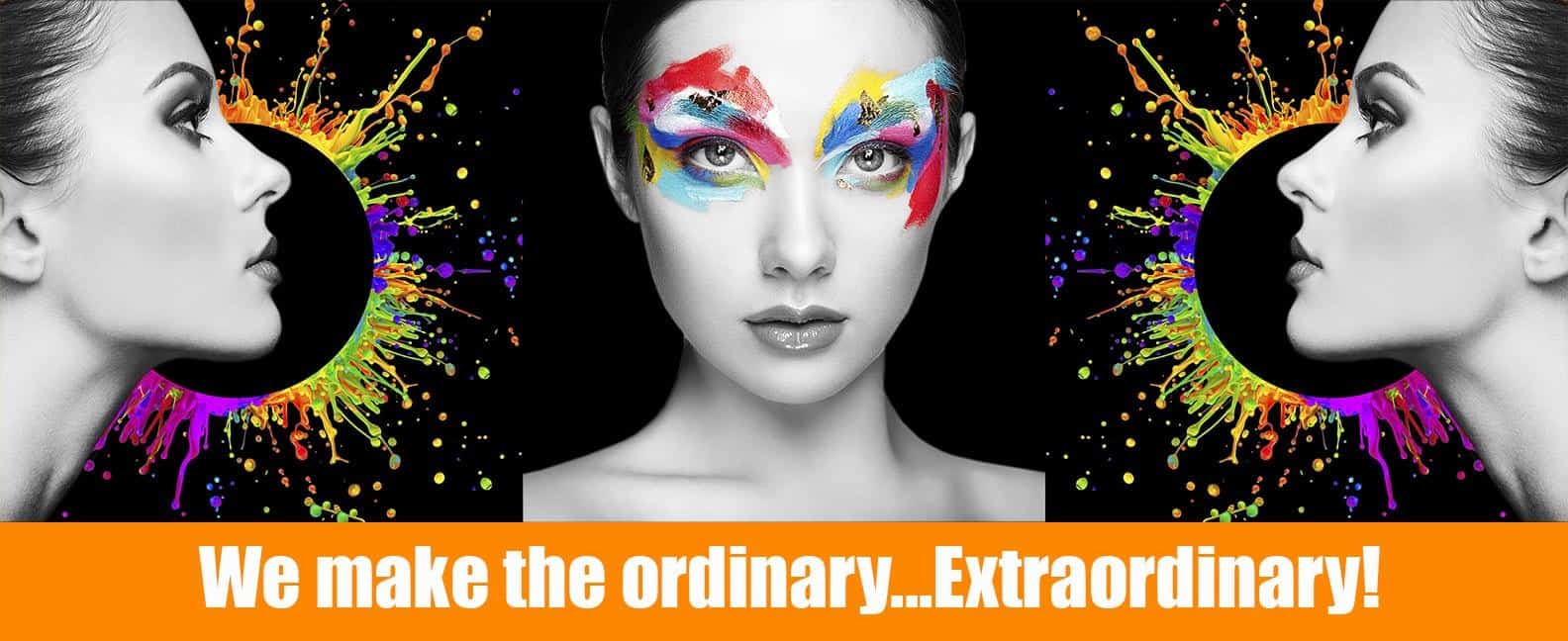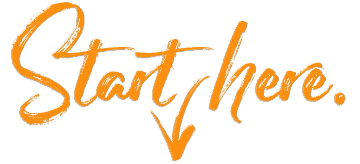Social Media Quick Guide: How Every Social Media Channel Works
Eastern Europe, for instance, relies on Facebook-like vKontakte, or VK. In China, WeChat and Qzone are among the preferred social media tools. The majority of American small- and medium-sized businesses looking to invest in social media marketing can generate the customer awareness and activity they need by employing some combination of Facebook, Twitter, LinkedIn, Instagram, Pinterest, YouTube, and Snapchat. But like social sites around the globe, each has something different to offer both consumers and brands. Consider this your go-to social media guide for making the most of your marketing spend by selecting and maximizing the social sites that are the best-suited to your business.
Why choose Facebook? Besides that fact that it offers multiple options for interacting with your customers, recent research from marketing analytics company Track Maven shows that some business types will find their largest audiences on Facebook compared with other social sites. If you have an accommodation and food service business like a hotel and or restaurant, a healthcare facility, software product, or sports and entertainment service, Facebook is your best bet for reaching your customers and building a community of followers.
To do this, you’ll need a Facebook Page and a strategy for populating it with interesting and relevant content like photos of your products, company news, and cross-promotional posts that introduce your business to a new group of potential customers.
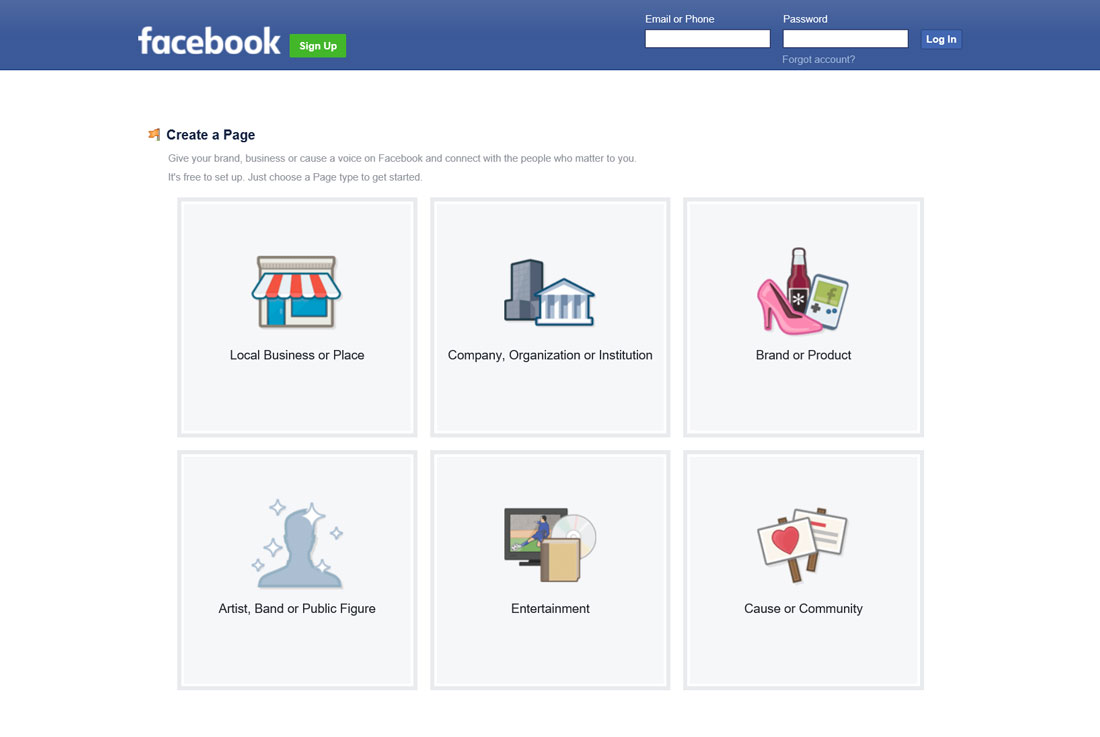
If you’d like to expand the reach of your posts beyond your existing followers, you can “boost” them by setting a budget and timeline and choosing an audience based on criteria such as location and age. Remember to use relevant hashtags to add context and help new customers find you on the site.
Beyond posts and a self-serve advertising product that puts your ads in your target audience’s News Feed, Facebook offers the ability to chat with customers through its messenger tool. The tool can even be used as the platform for an automated chatbot that speaks on behalf of your business.
Another increasingly popular technique for businesses big and small is creating a live streaming video of an event, product demo, or production facility tour using Facebook Live. Facebook has reportedly found that its users watch live video three times longer than pre-recorded video content.
Regardless of your Facebook marketing approach, you’ll want to measure Key Performance Indicators (KPIs) to determine your effectiveness. Be sure to include the growth of your follower count, audience engagement with your content, the daily and weekly reach of your content, and the number of conversions (like a click through to your website) that you receive as a result of your presence on the social site.
Twitter can offer some compelling statistics about the value of its platform. According to its Customer Insights study, 66 percent of users have discovered a new small business through this social site, 94 percent intend to make a purchase from the small and medium businesses they follow, and 69 percent have already done so based on content they’ve seen on Twitter. For both business-to-consumer (B2C) and business-to-business (B2B) brands, this social network is a doorway to improved awareness and customer engagement.
Twitter isn’t about making a hard sell, though. Rather, use it to participate in conversations, provide direct access to your brand and its people, entertain the platform’s users, and fuel your customers’ excitement about your product. A Twitter strategy might include sharing news about your awards or accolades, posting images of new and limited edition offerings, and recognizing popular cultural events. Two Roads Brewing has done all of this on Twitter, balancing text and hashtags with photography and animated GIFs.
On Twitter, you can measure the success of your posts and gauge what content types your audience likes best by tracking your follower count, likes, retweets, mentions (i.e. when another user includes your Twitter username in a post), and replies to your brand. Twitter makes this easy by keeping a summary of you tweet activity, impressions, profile visits, mentions, and follower count on your Twitter Analytics page.
As the leading social network for business professionals with 500 million members and counting, LinkedIn is best for B2B marketing. In fact, research from the Content Marketing Institute reveals that 89 percent of B2B marketers use LinkedIn to distribute content, and 71 percent believe it’s important to their success. Only email ranked higher.
No matter how you use LinkedIn, you’ll need a Company Page — and for that, you need a personal LinkedIn account. You’ll use your account to access the Company Page and make updates. Your Company Page should feature attention-grabbing images related to your business. In fact, that’s the general rule for all social sites.
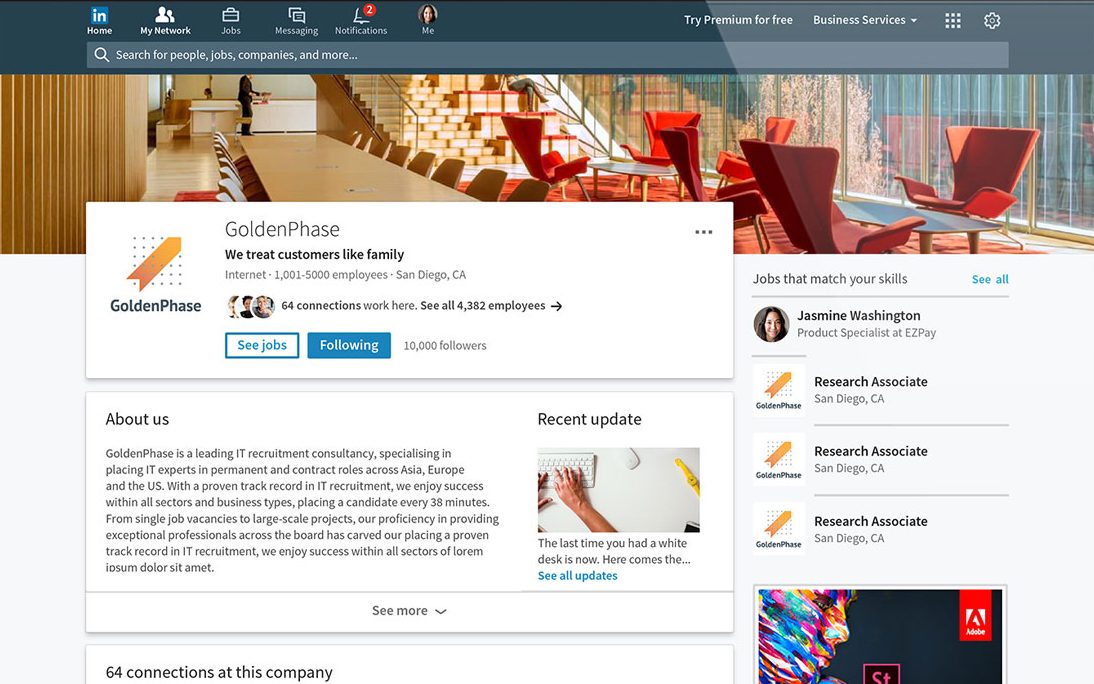
You can also publish articles on your personal LinkedIn page, which allow you to share your knowledge and establish yourself as an expert in your field. Studies have shown that long-form LinkedIn content between 1,000–3,000 words in length generates more shares than posts fewer than 1,000 words.
KPIs for this social network general include new followers, shares, comments, likes, and your overall engagement rate. You’ll find all of these in the Analytics section of your LinkedIn Company Page.
Instagram has an edge over other social networks: It sees the highest level of brand engagement, according to Track Maven. Businesses in 13 industries including consumer goods, finance and insurance, retail, and food services had the highest engagement ratios on Instagram compared with Facebook, Twitter, LinkedIn, and Pinterest. Only real-estate brands did better elsewhere, namely on LinkedIn.
As you might expect from a visual social network, photography rules. You can use it to familiarize followers with your products, generate interest in your store by taking users behind the scenes, and put your brand at the forefront of followers’ minds the next time they’re looking for a florist, plumber, or kids’ clothing store. Keep in mind that Instagram users are always on the lookout for fresh content, so it pays to post at least once a day (link to How to Develop a Social Media Marketing Calendar).
In terms of marketing strategy, pick two to five types of posts and stick with them for consistency. Some ideas include sharing photos snapped by your customers, also known as user-generated content, and featuring seasonal images that reference the weather or an upcoming holiday.
The Bar Method, a national workout-studio franchise, opened the doors to its Darien, CT studio last fall. It uses Instagram to share its clients’ success stories, introduce new instructors, and motivate its members to attend more classes. It does it all through a mix of original photography, illustration, and memes.
The Bar Method Darien makes a point of encouraging comments and adding a call to action whenever possible, like reminding its followers to sign up for a class. When it invited members to name its new merchandise mannequin, it repurposed the popular #mannequinchallenge hashtag to attract more attention and incorporated a t-shirt giveaway as an added incentive to stop by the studio.
On Instagram, marketing performance can be measured based on a number of KPIs: The volume and growth of your followers, likes, comments, shares, and the frequency with which other Instagram users include your custom hashtag — like #barmethoddarien — in their posts. The volume of traffic your website gets from this social network, also known as referral traffic, can be an effective measure of success as well.
For the smallest of businesses all the way up to big brands, Pinterest is another great platform for building and increasing awareness of your brand. As Pinterest points out, people come “looking for ideas to discover, save, and do” — so use this image-based platform to share tips, tricks, recipes, projects, and anything else that might inspire your target audience to take further action.
Create a business account or convert your existing Pinterest account to get started. Engagement on this social network comes in the form of likes, repins (content shares), and clicks. On your Analytics page, Pinterest will show you how your profile is performing across every device, help you understand your audience’s interests, and track traffic to your website. If you add a Pin It button to your site or blog, you can track engagement with that content through Pinterest, too.
Maryland-based Hen House Linens has built a Pinterest following of more than 14,000 “pinners” by sharing both photos of its products and inspirational imagery related to entertaining, design, and gift-giving.
Branding is front and center here, with Pin boards that include Breakfast with the Hen, Tailgating with the Hen, and Lunch Box Ideas with the Hen. To share even more content related to its product lines of tablecloths, aprons, kitchen towels, and pillows, Hen House Linens created numerous color-themed boards like Persimmons, and holiday-themed boards like St. Patrick’s Day Hen House Style.
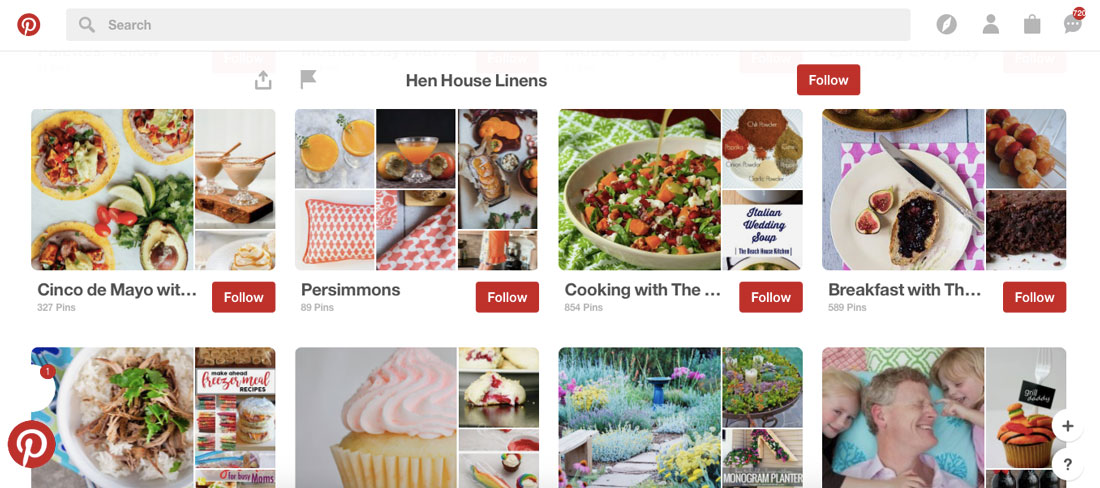
Like competing social sites, Pinterest has an advertising option: Businesses can turn pins of their choice into Promoted Pins, which are image-based ads that run throughout the network based on your targeting criteria and the budget you set prior to campaign launch.
YouTube
Whether it’s used for video interviews with company co-founders or staff, to feature product or recipe demos, or do behind-the-scenes tours YouTube’s storytelling power is unmatched by almost every other social-media platform.
You don’t need a massive marketing budget or professional production crew, but there’s no denying that creating a YouTube video can be considerably more time-consuming than posting to Facebook or Instagram. For this reason, YouTube is best-suited to slightly larger businesses that have more staff resources at their disposal. The good news is that YouTube videos are perfect for sharing on your other social feeds like Facebook and Twitter, so you can attract additional views and improve your chances of seeing a good return on investment.
To get started on YouTube, you need a Google account. From there, set up your business’s YouTube Channel. To help with brand recall, customize this Channel to reflect your brand identity and the current look and feel of your website. This can be as simple as creating a banner, like Chicago-based T-shirt company Threadless did. Its videos run the gamut from a brief peek inside its headquarters to tutorials aimed at the artists who produce its apparel designs.
Before you invest a lot of time in creating videos, check out what other businesses similar to yours are doing on the site to see what works and what doesn’t. Make sure to include a call to action at the end of your videos, such as asking viewers to leave a comment, share the video with their network of friends, or visit your website.
Snapchat
Mobile social app Snapchat can feel a little elusive when compared to other social sites, and that’s probably because its fairly new. At just five years old the network continues to evolve, adding new features like search functionality and adjusting its marketing offers, most recently by expanding its self-service Snapchat Ad Manager platform so smaller businesses can buy vertical video Snap Ads.
No Snapchat guide would be complete without a description of Snapchat Stories (similar to Instagram’s competing Stories). This is the feature that businesses can use to take viewers inside their events, offer previews of new products, and share promotional codes. Your Story — in essence a collection of snaps — will be seen by everyone who follows you on the app.
Perhaps more than any other social site, Snapchat is ideal for sharing live content. Keep yours light and fun with stream of consciousness-style messaging. Snapchat content sent to a group of followers only stays live for 24 hours, after which it disappears.
Another feature now available to businesses on Snapchat is Geofilters, which you can use to overlay a custom branded message onto users’ snaps based on their location. Some businesses also use Lenses, another form of overlay, to enhance their branded snaps.
This social platform skews young, so take that into consideration before signing on. The average user, Snapchat has revealed, is between 18 and 24. If this is your target audience, you’ll be pleased to hear that these consumers visit the app 18 times a day and spend between 25 and 30 minutes with it daily. In other words, the potential for engagement is high.
Not every social site is going to be a perfect fit. Armed with a social media guide for each, though, you can pick and choose the best networks for your needs to jumpstart your social marketing.

